All Power Apps Math & Statistical Functions (With Examples)

Math and statistical functions are among the most used functions in Power Apps. Fortunately, they are also some of the easiest functions to learn. Doing math inside of Power Apps has a lot in common with Microsoft Excel. Many of the core functions like SUM and COUNT are exactly the same. In this article I will list all the Power Apps math & statistical functions and show examples of how to use them.
Table Of Contents:
Math Functions
ABS Function
MOD Function
PI Function
POWER Function
SQRT Function
SUM Function
Statistical Functions
AVERAGE Function
COUNT Function
MAX Function
MIN Function
STDEVP Function
VARP Function
Rounding Functions
ROUND Function
ROUNDUP Function
ROUNDDOWN Function
INT Function
TRUNC Function
Count Functions
COUNTA Function
COUNTIF Function
COUNTROWS Function
Random Functions
RAND Function
RANDBETWEEN Function
Logarithm Functions
EXP Function
LN Function
LOG Function
Math Functions
Abs Function

Purpose
Gets the absolute value of a number (without signs). A negative number becomes positive. Positive numbers remain positive.
Syntax
Abs(number)
Arguments
number – a number value to remove signs from
Example
Abs(-3) // Result: 3
Abs(5) // Result: 5
Abs(0) // Result: 0
Mod Function
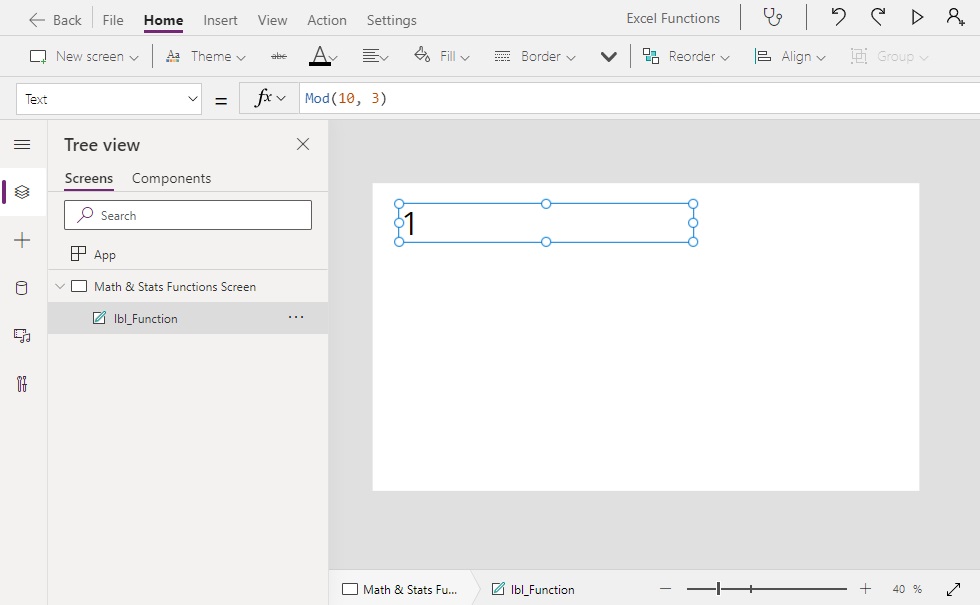
Purpose
Returns the remainder of a number divided by another number
Syntax
Mod(number, divisor)
Arguments
number – a number value to divide.
divisor– a number to divide another number with.
Example
Mod(10, 3) // Result: 1
Mod(10, 7) // Result: 3
Mod(10, 5) // Result: 0
Pi Function

Purpose
Returns the mathematical constant Pi (π)
Syntax
Pi()
Example
Pi() // Result: 3.14159265359
Power Function
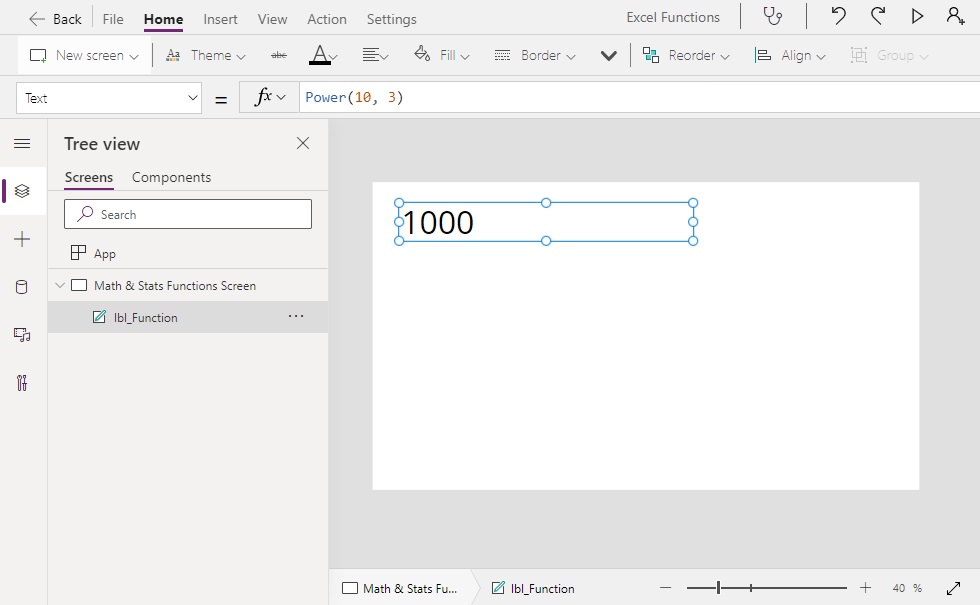
Purpose
Raises a number to the power of another number
Syntax
Power(base, exponent)
Arguments
base – the base number to raise
exponent – the exponent to raise a base number by
Example
Power(10, 2) // Result: 100
Power(10, 3) // Result: 1000
Power(5, 3) // Result: 125
Sqrt Function

Purpose
Get the square root of a number.
Syntax
Sqrt(number)
Arguments
number – a number value to get the square root of
Example
Sqrt(4) // Result: 2
Sqrt(16) // Result: 4
Sqrt(1) // Result: 1
Sum Function
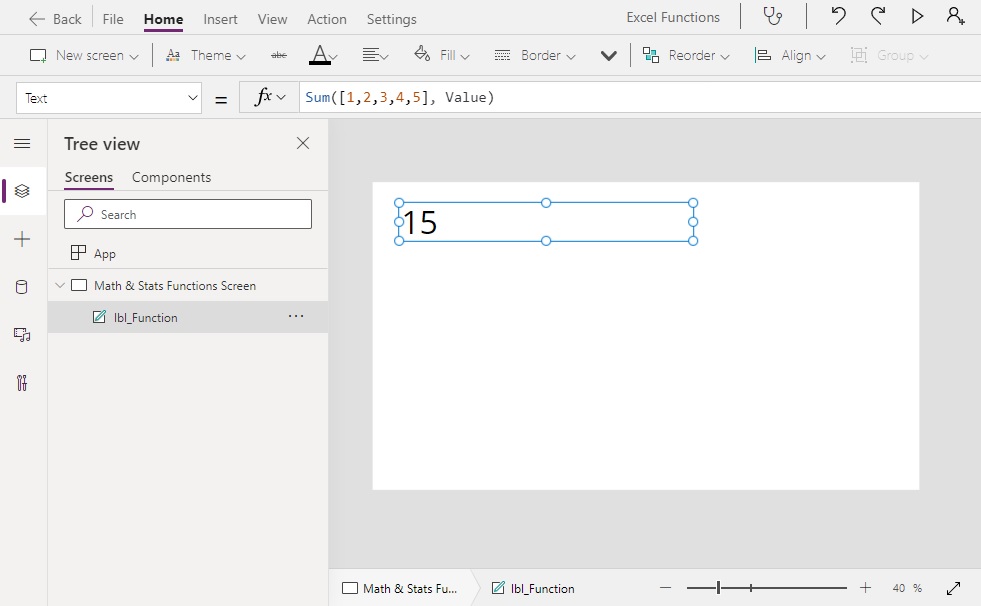
Purpose
Calculates the sum for a table of numbers
Syntax
Sum(source, expression)
Arguments
source – a table of numbers to be added
expression – a formula evaluated for each row of table that provides a set of numbers to be added together
Example
Sum([1,2,3,4,5], Value) // Result: 15
Sum(
Table(
{Letter: "A", Value: 1},
{Letter: "B", Value: 2},
{Letter: "C", Value: 3},
{Letter: "D", Value: 4},
{Letter: "E", Value: 5}
),
Value
)
// Result: 15
Statistical Functions
Average Function

Purpose
Calculates the average (arithmetic mean) for a table of numbers
Syntax
Average(source, expression)
Arguments
source – a table of numbers to get the average from
expression – a formula evaluated for each row of table that provides a set of numbers to be averaged
Example
Average([1,2,3,4,5], Value) // Result: 3
Average([3,4,6,9], Value) // Result: 5.5
Count Function

Purpose
Counts the number values in a single column table
Syntax
Count(source, expression)
Arguments
source – a single-column table of numbers to count
expression – a logical expression that decides which numbers to include in the count
Example
Count([2,4,6]) // Result: 3
Count([2,4,6,8]) // Result: 4
Count([2,4,6,8,Blank()]) // Result: 4
Max Function

Purpose
Returns the maximum value from a table of numbers
Syntax
Max(source, expression)
Arguments
source – a table of numbers to get the maximum from
expression – a formula evaluated for each row of table that provides a set of numbers for the maximum value calculation
Example
Average([1,2,3,4,5], Value) // Result: 5
Average([-2-1,0,1,2], Value) // Result: 2
Min Function
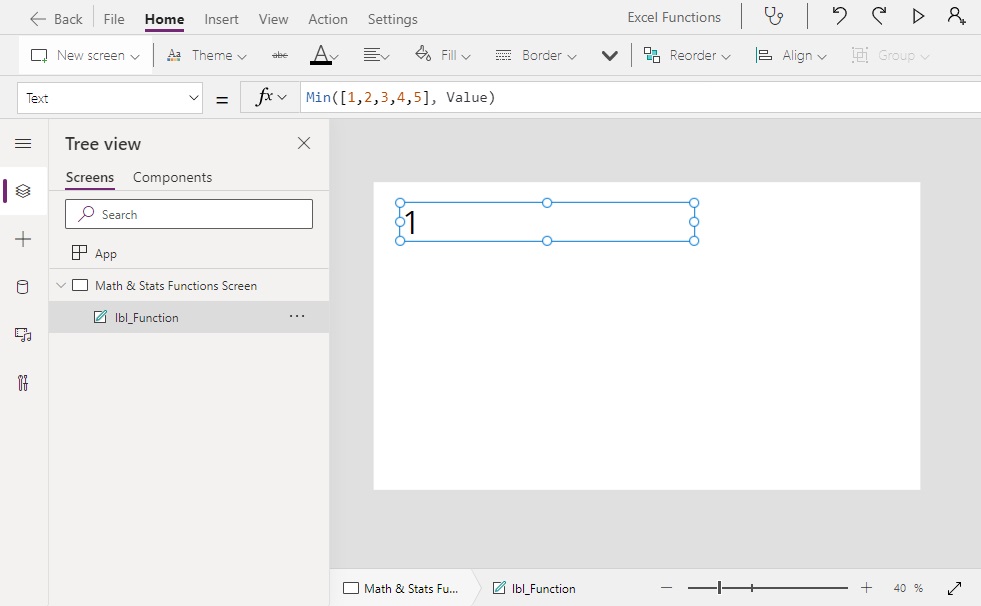
Purpose
Returns the minimum value from a table of numbers
Syntax
Min(source, expression)
Arguments
source – a table of numbers to get the minimum from
expression – a formula evaluated for each row of table that provides a set of numbers for the minimum value calculation
Example
Min([1,2,3,4,5], Value) // Result: 1
Min([-2-1,0,1,2], Value) // Result: -2
StdevP Function
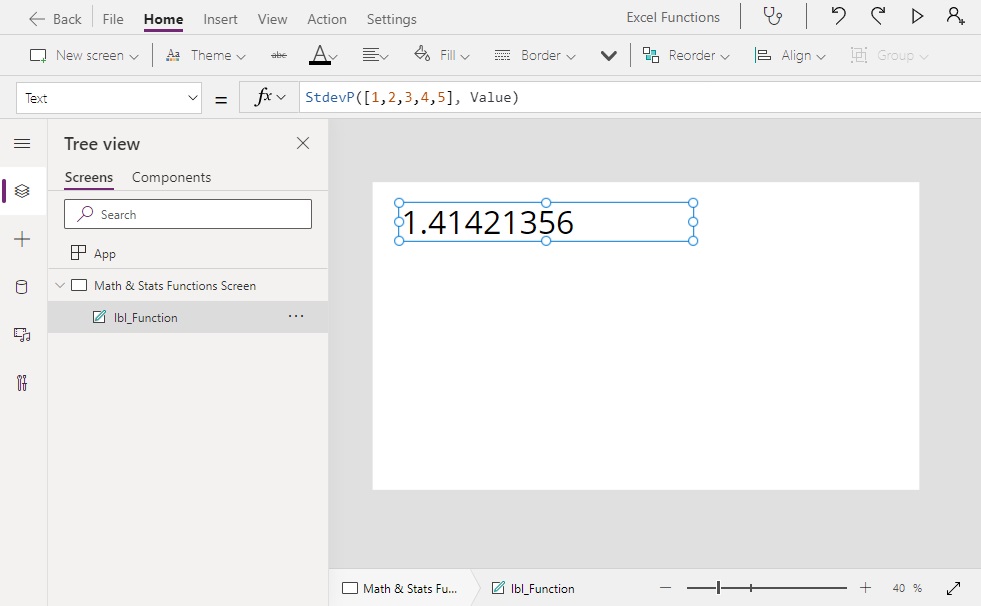
Purpose
Calculates the standard deviation for a table of numbers
Syntax
StdevP(source, expression)
Arguments
source – a table of numbers to get the standard deviation from
expression – a formula evaluated for each row of table that provides a set of numbers for the standard deviation calculation
Example
StdevP([1,2,3,4,5], Value) // Result: 1.41421356
StdevP([1,3,7,11], Value) // Result: 3.84057287
VarP Function
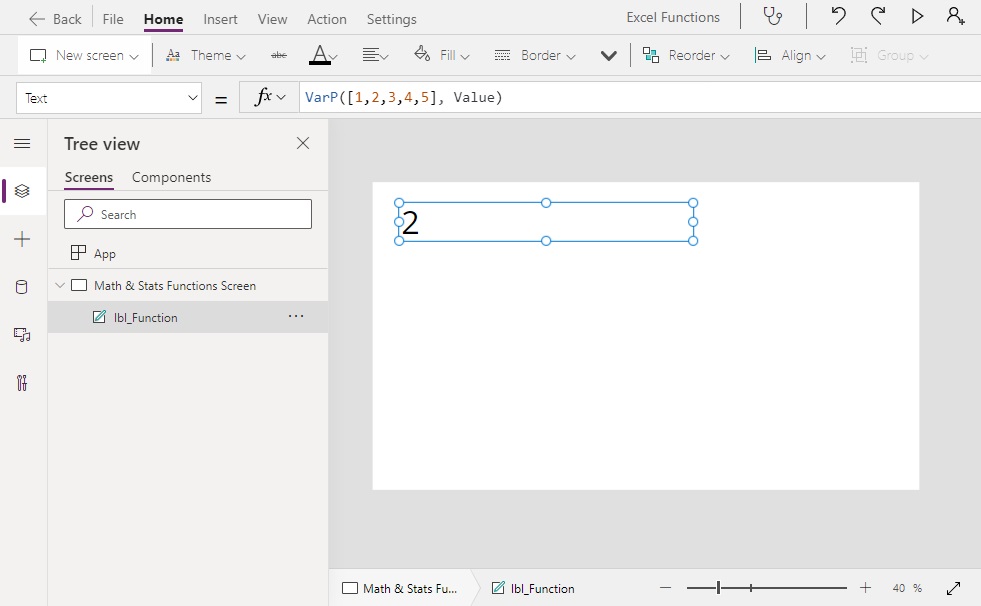
Purpose
Calculates the variance for a table of numbers
Syntax
VarP(source, expression)
Arguments
source – a table of numbers to get the variance
expression – a formula evaluated for each row of table that provides a set of numbers for the variance calculation
Example
VarP([1,2,3,4,5], Value) // Result: 3.84057287
VarP([1,3,7,11], Value) // Result: 14.75
Rounding Functions
Round Function

Purpose
Rounds a number to the nearest number with the chosen number of digits
Syntax
Round(number, num_digits)
Arguments
number – a number to round
num_digits – the number of decimal places in the rounded number
Example
Round(3.2, 0) // Result: 3
Round(5.75, 1) // Result: 5.8
Round(1.355, 2) // Result: 1.36
RoundUp Function

Purpose
Rounds a number up to the next number with the chosen number of digits
Syntax
RoundUp(number, num_digits)
Arguments
number – a number to round up
num_digits – the number of decimal places in the rounded number
Example
RoundUp(3.2, 0) // Result: 4
RoundUp(5.75, 1) // Result: 5.8
RoundUp(1.355, 2) // Result: 1.36
RoundDown Function

Purpose
Rounds a number down to the next number with the chosen number of digits
Syntax
RoundDown(number, num_digits)
Arguments
number – a number to round down
num_digits – the number of decimal places in the rounded number
Example
RoundDown(3.2, 0) // Result: 3
RoundDown(5.75, 1) // Result: 5.7
RoundDown(1.355, 2) // Result: 1.35
Int Function

Purpose
Rounds a decimal number or a text value to the nearest integer (a number with no decimals)
Syntax
Int(number)
Arguments
number – a number to change into an integer
Example
Int(3.2) // Result: 3
Int(5.75) // Result: 6
Int("1") // Result: 1
Trunc Function
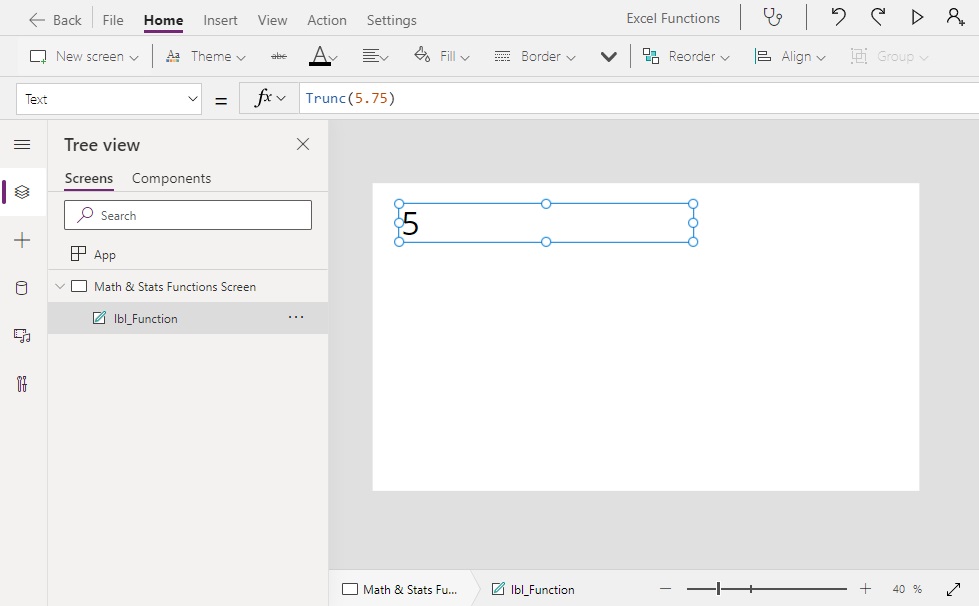
Purpose
Removes the decimals from a number
Syntax
Trunc(number)
Arguments
number – a number to truncate
Example
Trunc(3.2) // Result: 3
Trunc(5.75) // Result: 5
Trunc(1) // Result: 1
Count Functions
CountA Function
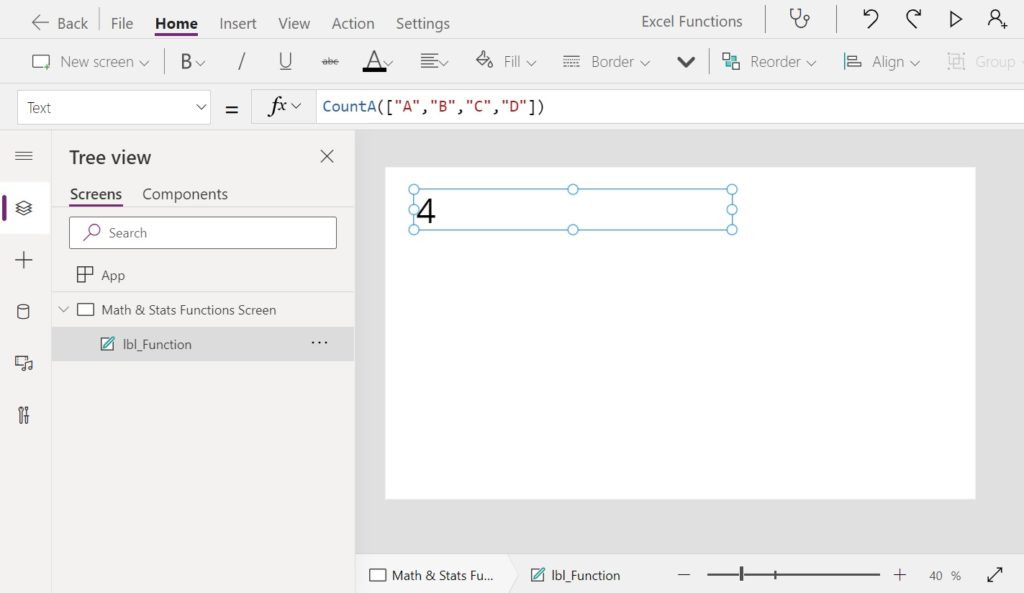
Purpose
Counts the number and text values in a single column table. An empty string “” counts as a non-blank value
Syntax
CountA(number, num_digits)
Arguments
source – a single-column table of numbers or text to count
expression – a logical expression that decides which numbers to include in the count
Example
CountA([2,4,6]) // Result: 3
CountA(["A","B","C","D"]) // Result: 4
CountA(["A","B","C","D",""]) // Result: 5
CountIf Function
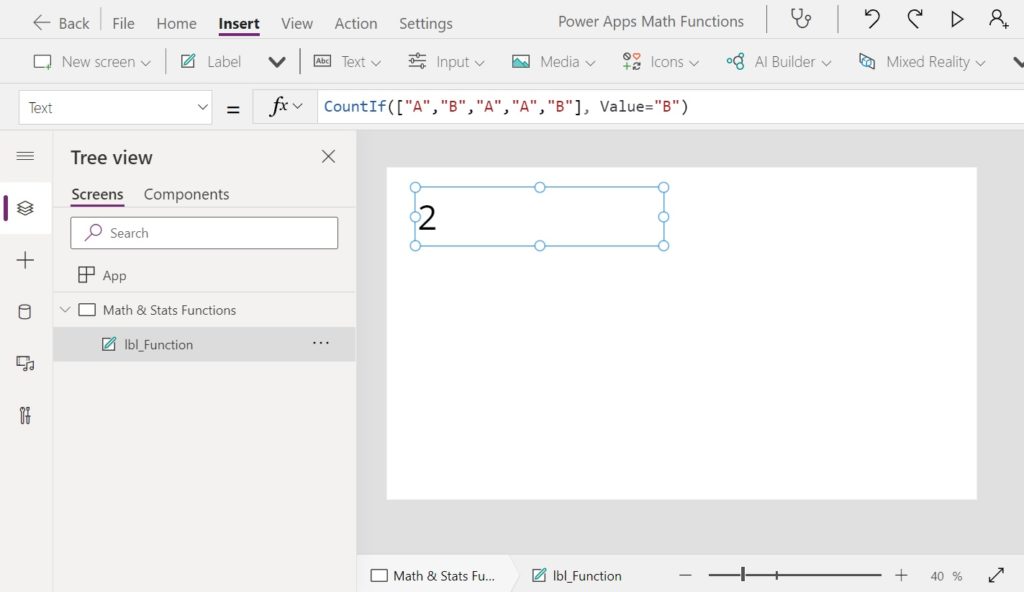
Purpose
Counts the number of rows in a table which meet a set of conditions
Syntax
CountIf(source, condition1 [, condition2, …])
Arguments
source – a table of values to count
condition – a logical expression evaluated for each row of the table that decides which rows to count
Example
CountIf(["A","B","A","A","B"], Value="A") // Result: 3
CountIf(["A","B","A","A","B"], Value="B") // Result: 2
CountIf(
Table(
{Test:"English", Score: 90},
{Test:"English", Score: 55},
{Test:"Math", Score: 73},
{Test:"Math", Score: 85}
),
Score>=65
)
// Result: 3
CountRows Function
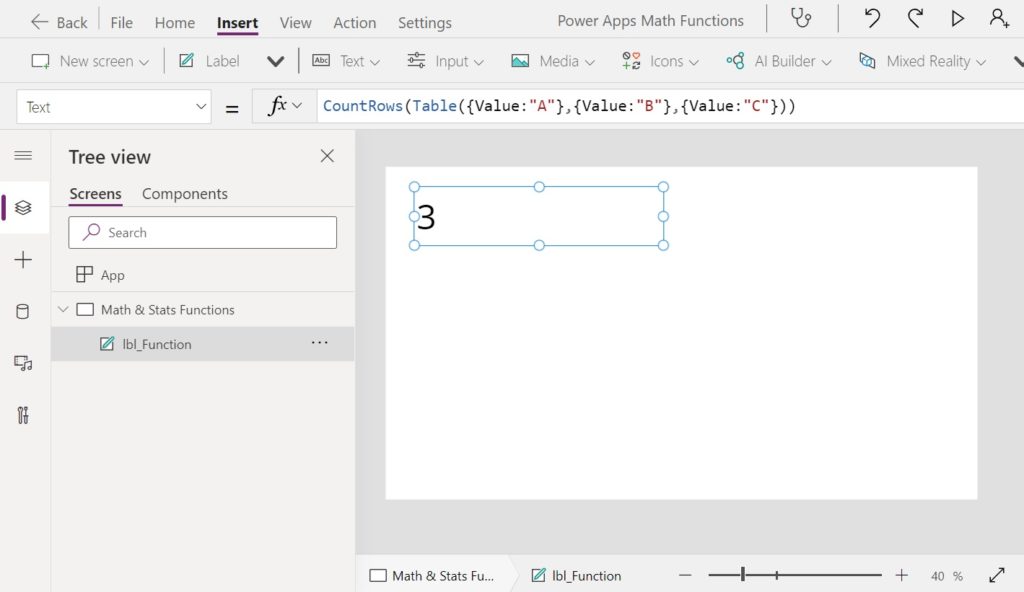
Purpose
Counts the number of rows in a table
Syntax
CountRows(source)
Arguments
source – a table whose rows will be counted
Example
CountRows(
Table(
{Value: "A"},
{Value: "B"},
{Value: "C"}
)
)
// Result: 3
Random Functions
Rand Function

Purpose
Generates a psuedo-random decimal number between 0 and 1
Syntax
Rand()
Example
// Result: 0.18009472
// Result: 0.25365866
// Result: 0.52303658
RandBetween Function
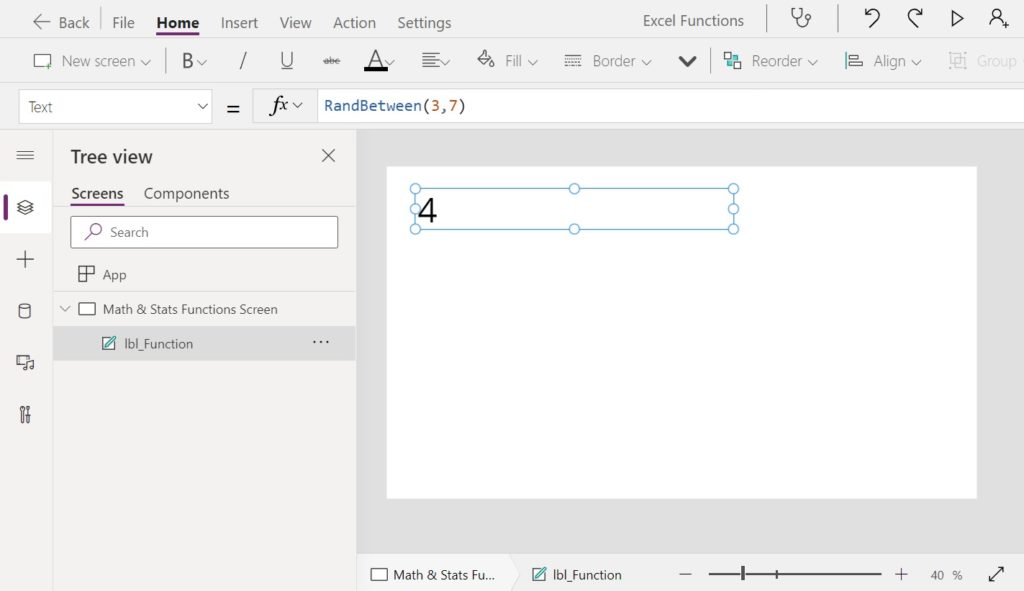
Purpose
Generates a random number within a range
Syntax
RandBetween(bottom, top)
Syntax
bottom – the lowest random number in the range
top – the greatest random number in the range
Example
// RandBetween(3, 7) // Result: 4
// RandBetween(3, 7) // Result: 3
// RandBetween(3, 7) // Result: 6
Logarithm Functions
Exp Function
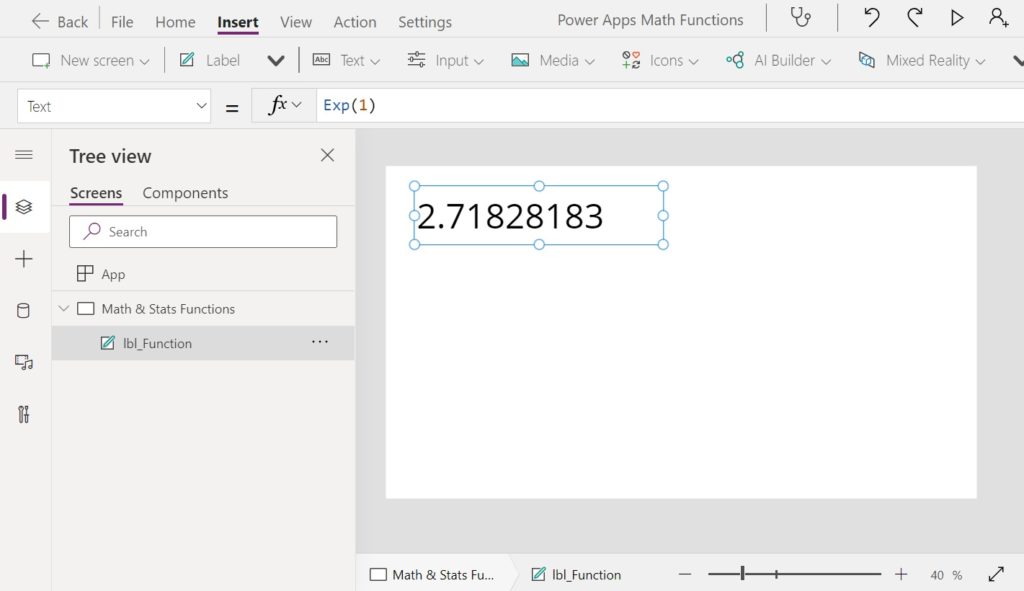
Purpose
Returns e to the power of a given number. The mathematical constant e (also known as Euler’s number) is equal to 2.71828182845904, the base of the natural logarithm.
Syntax
Exp(number)
Arguments
number – the number e is raised to the power of
Example
Exp(1) // Result: 2.71828182845
Exp(2) // Result: 7.38905609893
Ln Function
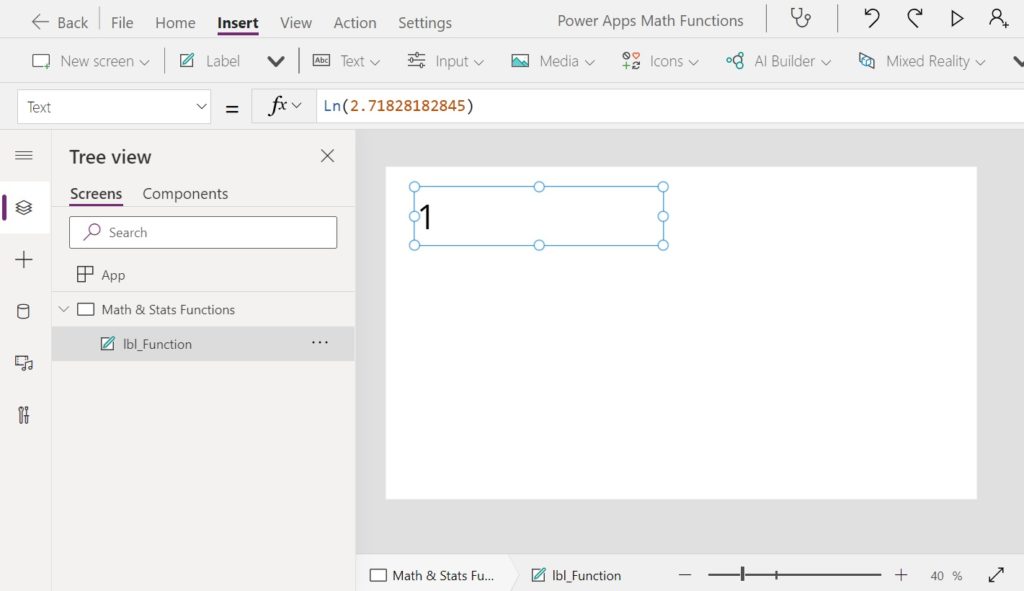
Purpose
Returns the natural logarithm of a number – the logarithm to the base of the number e (Euler’s number)
Syntax
Ln(number)
Arguments
number – the number to find the natural logarithm of
Example
Ln(2.71828182845) // Result: 1
Ln(7.38905609893) // Result: 2
Log Function
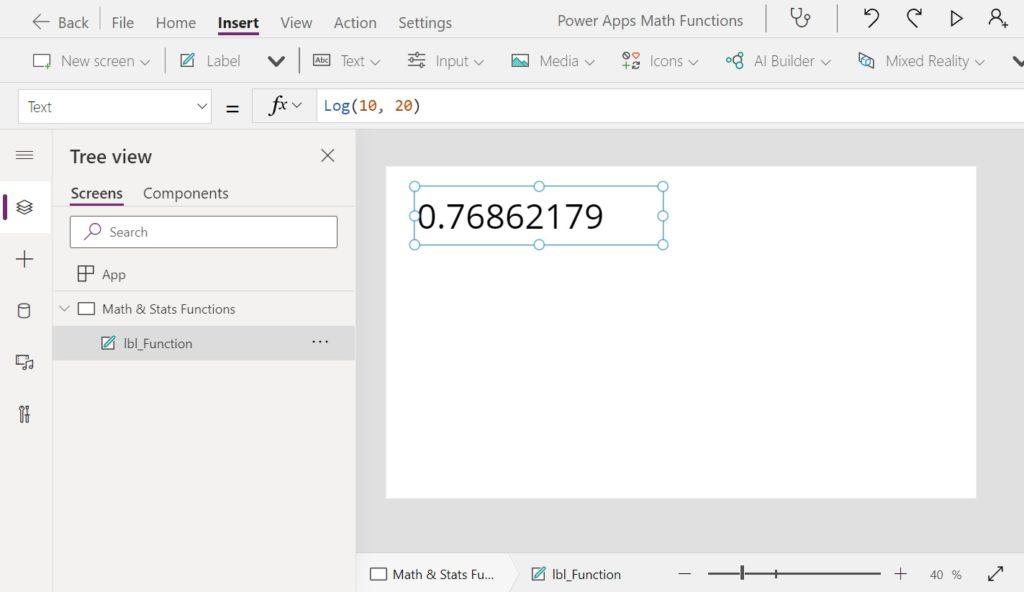
Purpose
Calculates the logarithm of a number for a given base
Syntax
Log(number, base)
Arguments
number – the number to calculate the logarithm for
base – the base of the logarithim
Example
Log(10, 10) // Result: 1
Log(10, 15) // Result: 0.85027415
Log(10, 20) // Result: 0.76862179 Did You Enjoy This Article? 😺
Subscribe to get new Power Apps articles sent to your inbox each week for FREE
Questions?
If you have any questions or feedback about All Power Apps Math & Statistical Functions (With Examples) please leave a message in the comments section below. You can post using your email address and are not required to create an account to join the discussion.






Thank you!